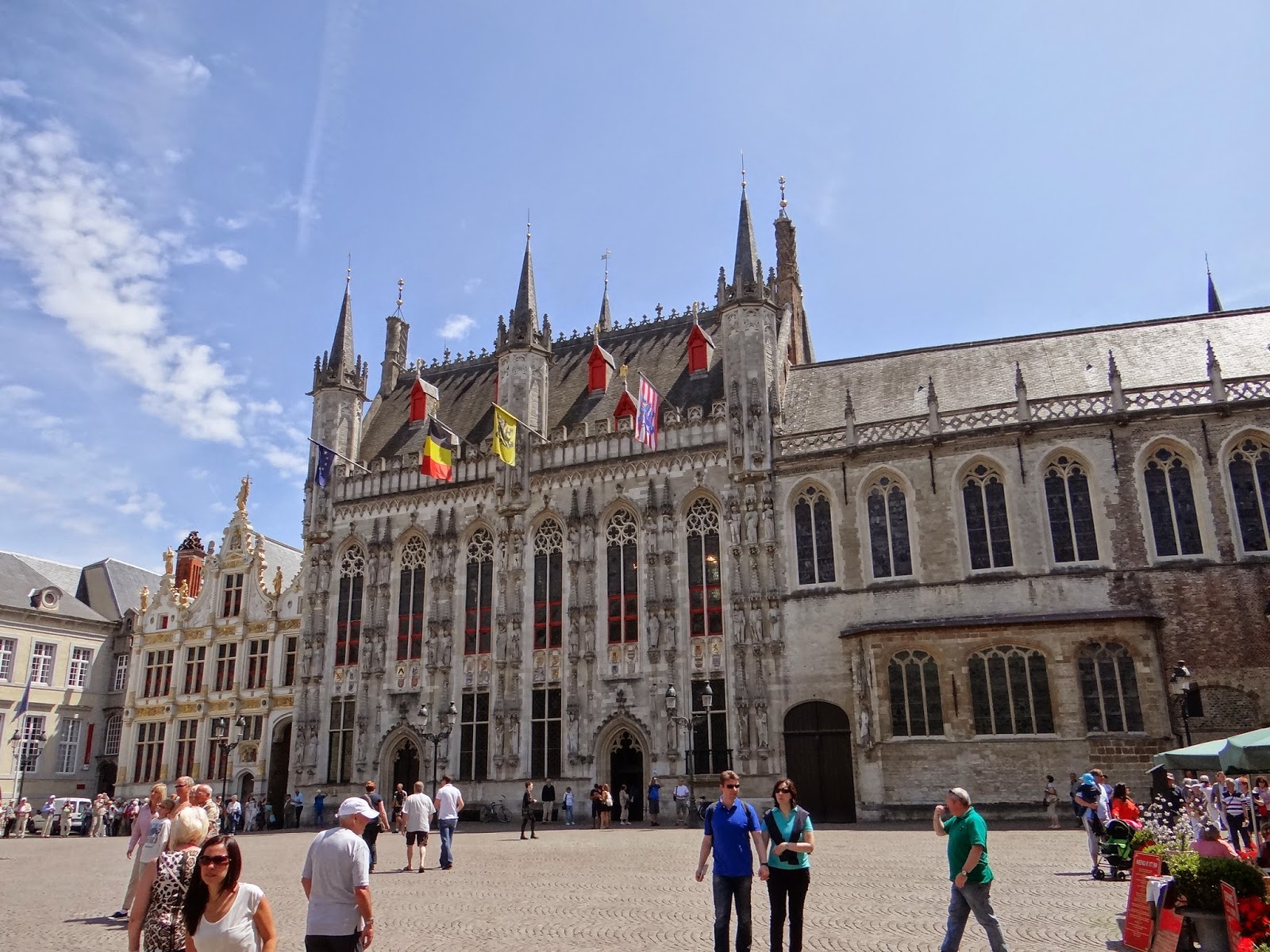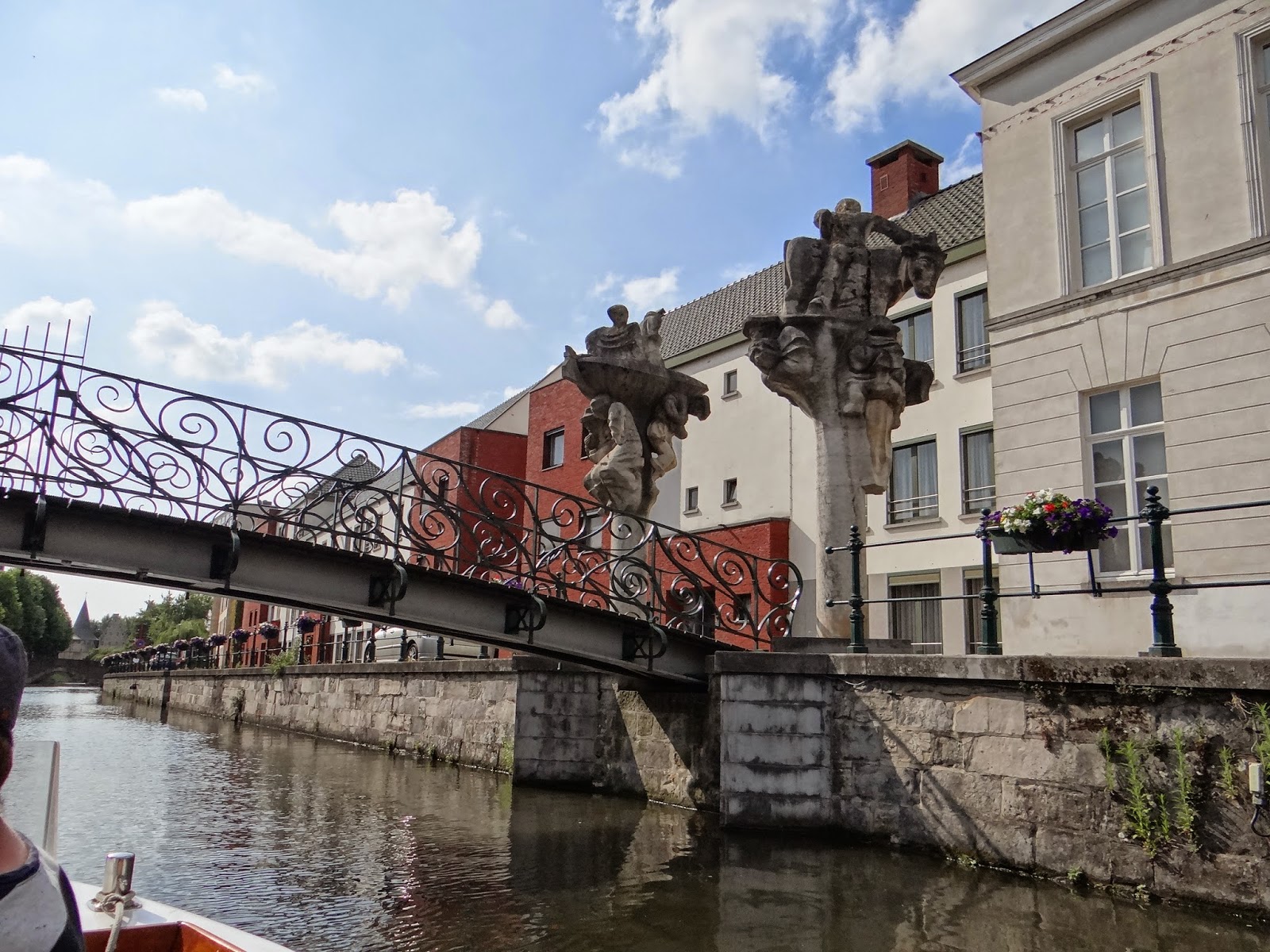It's an easy half hour train ride from Ghent to Bruges, a city which began life in about 862 AD as a castle built on marshland - the castle has long since disappeared, replaced by the city square - The Burg. Surrounding the square are some impressive buildings - quite medieval through to more recent, but the most impressive is the Stadhuis, a classic late-medieval town hall. Bruges is not all that much bigger than Ghent, but it is so busy with tourists, it seems much too frantic and congested. There are tour guides with signs trailed by 20 or 30 tour members, wherever we turned and the city seems smaller because of the crowds. And the popularity with tourists is reflected in the prices in the restaurants and bars and the huge number of souvenir shops.
We spent much of the day hitting the listed highlights including the Groeningemuseum and the Sint-Jan-Hospitaalmuseum, mostly devoted to the work of Hans Memling (1435-94) the most memorable being the St. Ursula Shrine - amazing. Part of the Hospital Museum is devoted to a fifteenth century hospital
and pharmacy - parts of which were in use until the early 20th century. Onze-Lieve-Vrouwekerk is Bruges' most striking church, right in the centre of the town and is itself quite beautiful, but the church contains one of only a very few works by Michaelangelo existant outside Italy -
Madonna and Child - and it is outstandingly beautiful. This was another of the artworks stolen by the Nazis and hidden away in Austria.
Much of Bruges is very pretty and the canals are used extensively, mostly for tourist boat cruises, in fact vast queues of people were waiting to get on boats. The crowds of people were a surprise, particularly on a Tuesday and the trains were packed as well. It was well worth the trip, but I'll take Ghent as a base for seeing Belgium any time. Whilst we didn't sample the lace in Belgium (one of the country's most significant exports) we certainly tried the chocolates and the frites along with many varieties of the Belgian beer.
The imposing gothic spire of the Onze-Lieve-Vrowekerk church close to the centre of the city.
The 15th century pharmacy in the Sint-Jan-Hospitaalmuseum - in use until early 1900s
Some of the amazing pharmacy jars in original condition - highly prized collectors items
 |
| The incredibly beautiful Madonna and Child by Michaelangelo |
Bruges Belfry - built in the 12 century, originally as a lookout post and warning system, using bells, but now devoted to a carillon.
The Burg - main square in Bruges - contains many architectural styles from medieval to more modern.
The Stadhuis or town hall, in the Burg - a symbol of the self confidence of Bruges in medieval times.
Intricate detail on the facades of many of the fine buildings in the Burg
One of the beautiful sights in Bruges.



























































